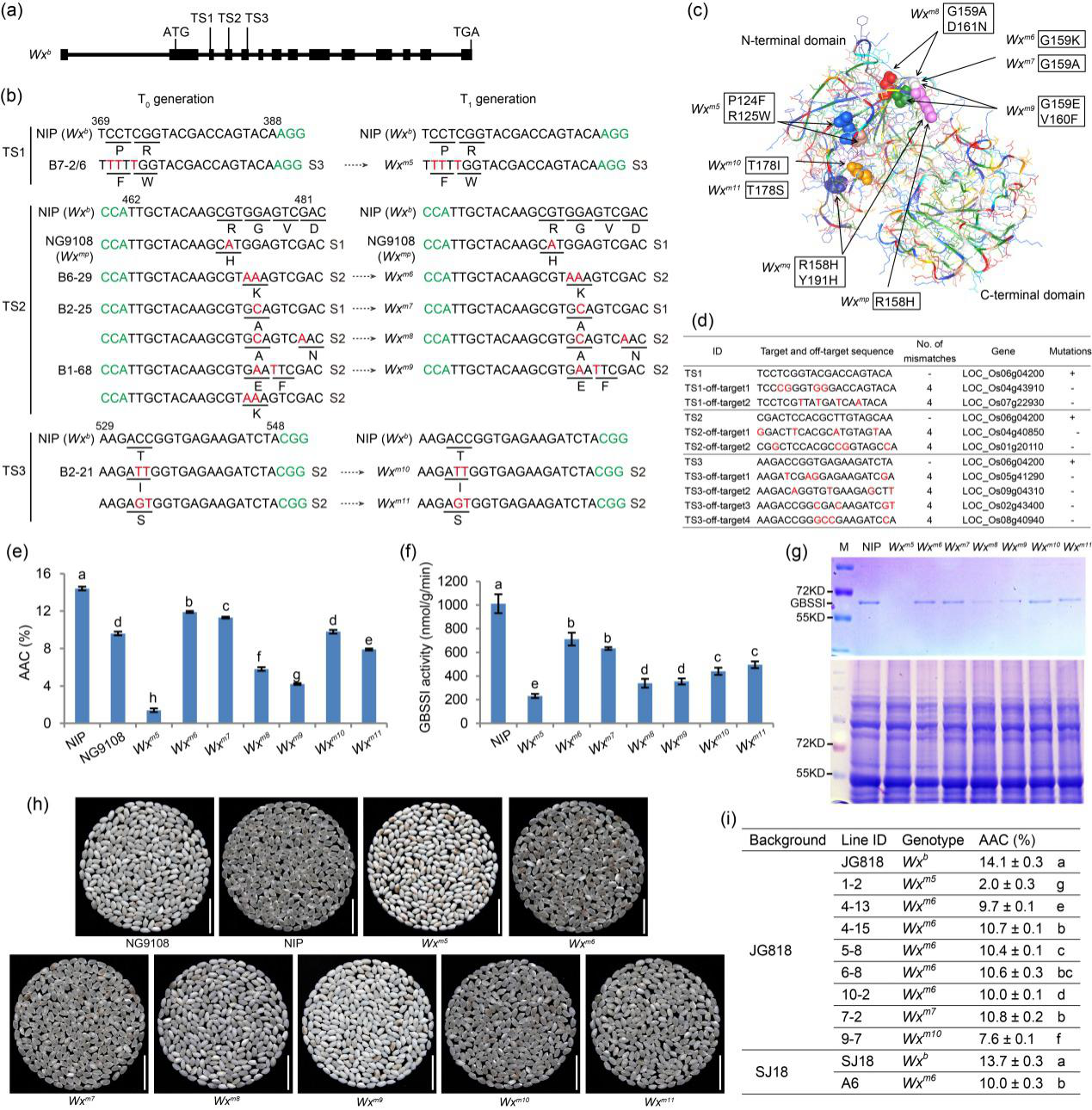The genetic diversity and phenotypic variability of crop agronomic traits is valued by breeders for their benefits in crop breeding. The amylose content (AC) in endosperm defines the eating and cooking quality, thus materials with a broad range of AC are coveted by breeders for its utility in crop quality improvement. Recently, Jie Yang team of the Institute of Food Crops, JAAS made new progress in the study of fine-tuning rice amylose content (https://onlinelibrary.wiley.com/doi/abs/10.1111/pbi.13433).
In this study, researchers generated several T-DNA-free rice lines harboring mutations by base editing rice waxy gene. These mutant lines cover a broad range of reduced AC (0-12%), compared with wild type (~14%). Especially, three of these lines show lower AC (~10%) but without change of the transparent appearance. Researchers also further verify similar results in two additional rice varieties. This study supports that it is feasible to obtain continuous mutations by substituting individual amino acids in the critical domain of genes underlying economically important traits, providing a novel practical strategy for crop breeding.

Fig.1 Fine-tuning amylose content by precise base editing of Wx in rice
(a) Diagram of the target Wxb gene. (b) Mutations in the edited T0 and T1 lines. The putative protospacer-adjacent motifs (PAMs) are shown in green. The number of altered bases in each line (colored in red) is indicated by the letter S followed by a number. (c) A structural model of Wxb constructed using the PROTEIN DATA BANK server; Mutated residues contributing to the changes of AC are shown as spheres and are colored (P124 in apricot, R125 in blue, R158 in pink, G159 in white, V160 in green, D161 in red, T178 in orange and Y191 in purple). (d) Analysis of potential off-target sites in the seven T1 edited lines. Red lowercase bases are mismatches to TS1-TS3; +, mutations detected; −, mutations not detected. (e) The AACs determined by iodine colorimetry of NIP, NG9108 and the edited lines. (f) GBSSI activities of the seeds of NIP and the edited lines. (g) SDS-PAGE analysis of starch granule-bound GBSSI (top) and total seed proteins (bottom) from mature seeds. M is a protein marker. (h) Comparisons of the appearance of different forms of milled rice. Scale bars, 1.75 cm. (i) The AACs of the two japonica varieties JG818, SJ18 and their corresponding Wx-edited lines. The different letters in (e), (f) and (i) indicate significant differences at P < 0.05 by Student's t-test. Data are means ± SD (n = 3).


